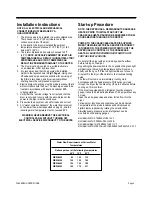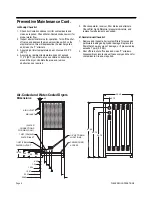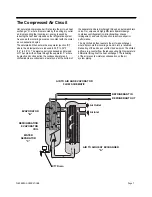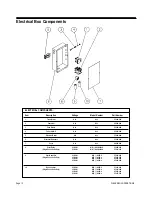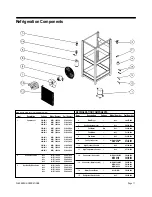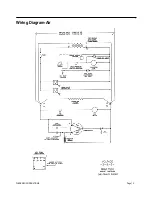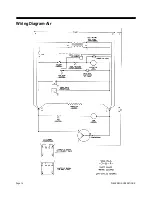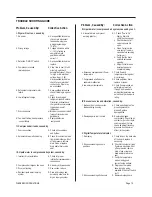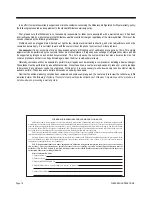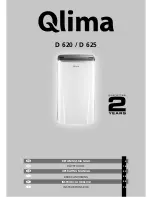
Page 8 WILKERSON
OPERATIONS
The refrigerant compressor (“A”) increases the pressure and
the temperature of the returning suction vapor containing the
latent heat removed from the air by the evaporator (“B”). This
high pressure vapor is then condensed by being cooled in the
condenser (“C”). The condenser surrenders the heat to the
surrounding ambient.
The liquid refrigerant flows from the receiver through a liquid
line heat exchanger located in the suction line (“H”), through
the filter/dryer (“E”), and the the thermostatic expansion valve
(“F”), which regulate the flow of refrigerant into the evaporator
(“B”). The liquid refrigerant removes the heat from the
compressed air by evaporation. The hot-gas bypass valve
(“G”) controls the temperature of the evaporator by sensing
low evaporator pressure and injecting hot discharge gas to be
mixed with the liquid refrigerant entering the evaporator,
creating an artificial load during low load operation to prevent
ice from forming in the evaporator.
The refrigerant now flows to the suction accumulator (“D”),
where any liquid refrigerant is intercepted allowing only vapor
to return to the compressor completing the refrigeration cycle.
Refrigeration Circuit
SUCTION
ACCUMULATOR
(D)
EXPANSION
VALVE
(F)
HOT GAS
BY-PASS VALVE
(G)
TXV
BULB
EXTERNAL
EQUALIZER
LINE
FILTER
DRYER
(E)
EVAPORATOR
(B)
LIQUID
LINE HEAT
EXCHANGER
(H)
COMPRESSOR
(A)
CONDENSER
(C)
AIR FLOW
DISCHARGE
SUCTION






